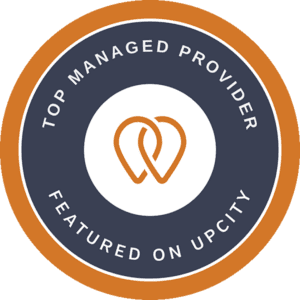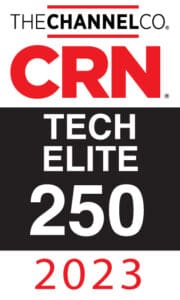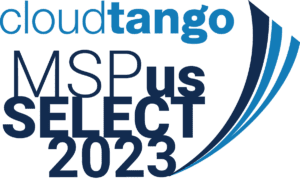Most organizations are dealing with digital systems and interconnected networks. In addition, most business infrastructures are lined with complex and interconnected systems, making management of these infrastructures quite critical to the success of any organization or business.
Proactive monitoring and management refer to a proactive approach by organizations whereby they anticipate and address emerging problems before they escalate into major problems. Unlike reactive monitoring and management which deals with and diagnoses problems after they’ve occurred, proactive monitoring and management seeks to diagnose and assess systems and digital infrastructures inside an organization in preparation for disasters.
Why Proactive Monitoring and Management?
- Preventing downtime. One of the key roles of proactive monitoring is preventing downtime. When organizations conduct regular check-ups and manage any issues, they help restore systems in time, thus preventing any foreseeable and unforeseeable risks and downtimes.
- Cost savings. Proactive monitoring helps organizations identify issues before they develop into fully-fledged problems with devastating financial and legal implications. By diagnosing issues earlier on and responding to them, proactive monitoring and management help save costs and optimize resources.
- Enhanced reliability. Proactive monitoring and management anticipate and address emerging problems and issues, thus creating a stable operational environment. By promoting a stable operational environment, active monitoring enhances the reliability of organizational infrastructure.
- Resource utilization. Proactive monitoring allows for better resource optimization and better resource planning, ensuring resources are allocated efficiently and effectively.
- Better performance and predictability. Organizations that leverage proactive monitoring benefit from better performance and increased productivity. That’s because a stable operating environment ensures better performance, more profitability as well as enhanced reliability of digital resources.
Key Components of Proactive Monitoring and Management
Proactive monitoring and management cannot happen without specific resources. This section of the article examines critical resources that are required for successful proactive monitoring and management.
1. Advanced Tools and Technologies
Proactive monitoring relies on sophisticated, complex tools and infrastructures designed to collect, analyze, and process huge datasets. One of these tools is the application performance monitoring (APM) tool which tracks the performance of applications and helps organizations identify and resource issues that could affect users.
Another tool is a network performance monitoring tool, which helps organizations assess and evaluate the performance of networks, preventing bottlenecks and ensuring optimal data flow. Infrastructure monitoring platforms monitor the performance of hardware and software components to ensure the overall reliability and stability of the entire operating system. Infrastructure monitoring platforms (IMP) generally help organizations know the status and performance of their hardware infrastructures, improving transparency and reliability of computing infrastructures.
computing infrastructures.
2. Integration with existing systems
Interoperability refers to the nature of digital systems and operating infrastructures to seamlessly integrate and connect with existing systems in an organization. For instance, when you purchase a procurement solution or e-procurement software, it should seamlessly integrate with your enterprise resource planning systems. It’s important to note that the seamless integration with existing systems is a crucial part of the success of any proactive monitoring and management.
As part of proactive monitoring and management, organizations must ensure that the existing infrastructure, as well as new technologies, integrate seamlessly with each other. In addition, this integration should focus on compatibility with legacy systems and the scalability of integrated systems. Scalability is the ability of monitoring tools to seamlessly scale alongside the organization’s growth and evolving technological landscape.
3. Automation capabilities
Did you know automation is the cornerstone of successful proactive monitoring? Well, automation enhances efficiency, reduces downtimes, and allows organizations to proactively address issues. Some of the key elements of automation that you should focus on in your active monitoring and management include:
- Event correlation and analysis. Event correlation and analysis is the ability of your automation tools to compare and contrast two events, leading to faster identification of issues or problems and improving overall efficiency and performance.
- Automated remediation. Implementing automated responses to recurring issues and common problems reduces the need for manual intervention, saving time and resources and accelerating resolution time.
- Predictive analytics. Predictive analytics works by utilizing historical data and improving the prediction of potential issues or problems. Predictive analysis allows organizations to analyze past data or historical data and make informed decision-making or more accurate predictions about issues.
Implementing Proactive Monitoring and Management
Given that proactive monitoring and management is a critical step for ensuring systems reliability, enhancing performance, and improving predictability, it’s important to analyze the process of implementing an effective monitoring and management system.
Assess Current Monitoring Practices
The first step of implementing a proactive monitoring and management system is assessing the current monitoring practices to identify the best practices. Before embarking on a comprehensive monitoring of your organization, it’s equally important to conduct a comprehensive assessment of the organizational system. This involves thoroughly examining the existing tools, methodologies, and processes. All your tools, technologies, and methodologies must be examined for the following factors:
- Effectiveness. Assess how effective your hardware and software respond to problems. Evaluate the current infrastructure and its ability to detect, alert, and respond to problems efficiently.
- Scalability. Assess whether the existing monitoring infrastructure can scale according to the growth of the organization. This means that the present systems, tools, and processes must scale according to the growth of the organization and the emerging technological landscape.
- User feedback. An important part of monitoring is obtaining user feedback and recording complaints and complements. Know what works for your customers and what doesn’t. User feedback can help you determine the status of your infrastructure.
- Resource utilization. Analyze how efficiently the current resources are being used by the current monitoring set-up. If the current monitoring set-up is consuming more resources, it’s time to examine alternative solutions to resources or optimize resources.
Edafio – Accelerating Proactive Monitoring and Management
Managed service providers help organizations assess and improve proactive monitoring and management of their systems and infrastructures. At Edafio, we provide efficient and reliable proactive monitoring, ensuring organizations scale and respond seamlessly to their needs.
Whether you’re a small retail outlet or a large commercial establishment, we can help you kick-start proactive monitoring and management, ensuring you optimize your computing resources. Edafio provides reliable and trusted solutions, helping organizations – small businesses, medium-sized enterprises, and large corporations – fully monitor systems remotely.








